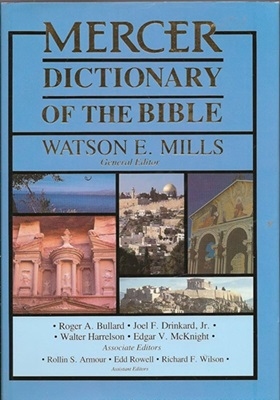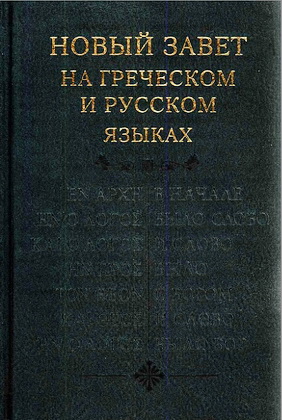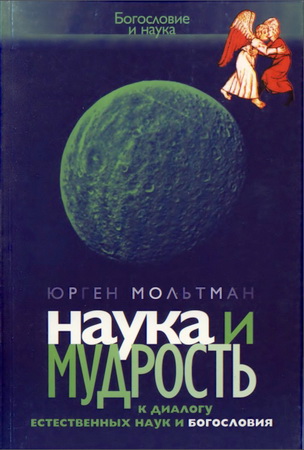
Mills - Mercer Dictionary of the Bible
Watson E. Mills - Mercer Dictionary of the Bible
Macon, Georgia: Mercer University Press, 1990
ISBN 0-86554-299-6 (casebound) H264
ISBN 0-86554-373-1 (paperback) P86
For 2,000 years the Bible has exercised an unparalleled influence in the lives of individuals and nations, an imprint woven into the very fabric of civilization and, in large measure, determining its direction and quality. Mercer University's foundations can be traced to this very influence, where the search for truth has been fostered by reverence for God. For almost 160 years a major dimension of our educational endeavors at Mercer has been the search for biblical truth. Likewise, the National Association of Baptist Professors of Religion (NABPR), a fraternity of "teachers of religion" and/or "teachers of Bible," arose among persons who were committed to understand clearly, to interpret faithfully, and to teach effectively those truths that come to us through the Bible. In the Mercer Dictionary of the Bible (MDB) the teachers of NABPR have joined with Mercer University Press in bringing together a new and important resource for interpreting the Bible. Our hope and expectation is that MDB will serve as a critical and enlightening pedagogue for those who are seeking to enhance their understanding of that most significant body of literature we call the biblical literature.
In his classic study of ancient Israel's life and culture Johannes Pedersen described Canaan, the ' 'land of the Bible," as a "narrow borderland dividing sea from coast" that quite naturally became the highway between the ancient Northern (Mesopotamian) and Southern (Egyptian/Arabian) centers of civilization. Through that narrow hinterland flowed a steady commerce in goods and culture, politics and religion. It is no wonder, Pedersen observed, that many people should meet there, some to pass through and some to stay. The books that have been written about and emerged from those peoples, and specifically, the heritage they have passed to us through the writings we call scripture would fill many libraries. Yet here, within the one-volume borders of MDB, one may discover a newly marked "highway" to biblical understanding.
The "land of the Bible" was populated by persons of diverse, variegated stock. The pages and the writings of MDB were composed by diverse people, diverse in background and viewpoint. More than 225 persons have contributed to this significant work. These contributors have been encouraged to express themselves freely, within the confines only of presenting facts fairly and clearly, and interpreting truth honestly and openly. Therefore, a wide range of biblical perspectives and theological views may be found in the MDB. Readers will search these pages in vain for evidence of any attempt to fit the contributions of these Bible teachers into the procrustean beds of any theological or even non-theological prescription. This plurality of perspectives is an entirely appropriate approach to the diversity of biblical literature itself and, in the end, we believe that MDB will become an exceedingly valuable tool in the effort to uncover the rich truth of the Bible.
Despite their diversity and individuality, the contributors and editors of MDB have diligently worked with common purpose. Each of them is a teacher or is directly involved in the support of teaching and scholarly research. The Mercer Dictionary of the Bible will serve as an enduring tribute to their commitment to the high purposes of learning and teaching and to the importance of understanding the Bible as a primary means for understanding truth itself.
* * *
The Mercer Dictionary of the Bible (MDB) is the result of four years of research and writing on the part of more than 225 members of the National Association of Baptist Professors of Religion (NABPR). The MDB is the most ambitious scholarly endeavor ever undertaken by the NABPR. Since its inception in 1924, the NABPR has engaged in a number of publishing projects: Perspectives in Religious Studies (a quarterly journal), Special Studies/Monograph Series, Bibliographic Series, Dissertation Series, and the Festschriften Series. The present project is another natural expression of the NABPR's conscious decision to make specific contributions to the broad field of religious studies.
In a real sense, the MDB is a product of the professional, teaching, and research careers of each scholar who has contributed to its pages. Yet its 1.2 million words, 1,050+ pages, and 150 illustrations make no claim to. tell readers all they need to know about the Bible—no one book or even library could do that. Rather our hope is that the MDB will provide accurate, relevant, and even interesting information regarding the history, traditions, and literature collected in what we know as "scripture." Since MDB is a product of a professional community of scholars, it reflects a broad range of opinions and approaches to the critical issues involved in the study of the Bible. There has been a studied attempt not to require contributors to follow any specific school of interpretation: every effort has been made to avoid "evangelizing" for a particular position on this or that issue.
Obviously, the MDB is no substitute for studying the scripture. To encourage such study, MDB provides thousands of specific references to the biblical materials, canonical and noncanonical. Nor does MDB pretend to supplant the more comprehensive standard Bible dictionaries or the many one-volume student handbook-type dictionaries. Rather MDB seeks to fill a real need for a one-volume dictionary intended for use by both beginning and advanced Bible students in college, university, and seminary. 'MDB begins with a classroom perspective: the editors of and contributors to MDB are all members of the National Association of Baptist Professors of Religion; all are either directly involved in teaching beginning and advanced Bible students or in the support of those who are teaching. The needs of the student have shaped the structure and content of the MDB.
* * *
Dialogue of the Savior
This somewhat fragmentary tractate is the fifth in Codex III from the Coptic library of nag hammadi. It is a revelation dialogue concerned with the eschatological "time of dissolution" (122.2-3), i.e., bodily death and the ascent of the soul. Like other Gnostic revelation dialogues, the Dialogue displays such features as questions by interrogators (the Twelve Apostles and mary), answers by the revealer (the "earthly Jesus"), action by the revealer, and a conclusion. Missing is an initial setting for the dialogue (usually, in Christian Gnostic texts, a post-resurrection appearance of Christ).
The whole may be outlined as follows: (1) Jesus announces his impending departure from earth and teaches the disciples a prayer emphasizing the need to seek freedom from the body through ascetic practice (120.1-122.1). (2) He then instructs the disciples regarding the "time of dissolution" (= the postmortem ascent of the soul past cosmic powers), illuminated Gnostics versus the ignorant, some cosmological wisdom, and the psychology of human beings (mind, soul, body) (122.1-129.16). Next (3), questions from Judas (e.g., about what existed before heaven and earth) introduce a cosmological section that includes typical Gnostic exegesis of genesis and explanation of creation as the result of the logo’s ordering. This section (127.19-131.18) concludes with Judas's praise of the Lord. (4) Next there are eschatological questions from Mary and matthew, the former being told that gaining immortal life requires keeping Jesus' sayings in the heart. Matthew, in turn, is told he will find the "place of life ...(and) pure light" in self-knowledge (131.19-132.19). (5) Again, the theme of cosmology is taken up, with the Lord explaining that the Logos sustains everything but that self-knowledge is more important than cosmic knowledge (132.19-134.24). (6) Concluding the Lord's comments about the "time of dissolution" is a passage in which Judas, Matthew, and Mary have a vision of the Abyss of punishment and how good souls are rescued from it. When further visions are requested, however, they are told they must look "within" themselves. The section closes with commissioning of the disciples (134.24-138.2). (7) The last part (138.2-147.22) contains additional questions on eschatological matters based on Gnostic interpretations of Jesus' sayings. Evil powers are overcome when Gnostics are stripped of the "works of femaleness" (= the physical bodies) and are clothed in heavenly garments.
Scholars have identified oral and possibly written sources in the text, including: an apocalyptic vision (134.24-137.3), a creation myth (127.23-131.15), an ascent of the soul through heavenly spheres (121.5-122.1), a cosmological wisdom list (133.23-134.24), and a dialogue between the Lord and three disciples (124.23-127.19; 128.23-129.16; 131.19-133.21; 137.3-146.20). The sayings of Jesus found in the last-named are interpretations of traditional sayings that appear earlier than similar ones in John's Gospel.
Two key interpreters (Koester and Pagels) maintain that the tradition of Jesus' sayings in Dialogue of the Savior may go back to the late first century c.e. and that the present tractate is "proto-Gnostic." Another (Perkins), however, connects it with the ascetic teaching of the Syrian Gnostic school of the apostle thomas.
See also gnosticism; nag hammadi.
Bibliography. H. Koester and E. H. Pagels, "The Dialogue of the Savior (III.5)," The Nag Hammadi Library in English, ed. J. M. Robinson and "Report on the Dialogue of the Savior," Nag Hammadi and Gnosis, ed. R. McL. Wilson; P. Perkins, The Gnostic Dialogue: The Early Church and the Crisis of Gnosticism.
—MALCOLM L. PEEL
Mephibosheth
[mi-fib' oh-sheth] An Israelite personal name, apparently meaning "From the mouth of the Potent One'' (that is, sanctioned by the deity who is known for his sexual potency). Reference thereby is made to the Canaanite fertility deity, Baal. While this name was acceptable in early Israel, later generations used the word bosheth in the sense of "shame,'' and thus understood the name in a negative sense (the oft-repeated modern suggestion that the element bosheth, with the meaning "shame," has been substituted for Baal by later generations, is without merit).
1. A son of King saul, who (along with other family members) was handed over to the Gibeonites to be executed. This david did, at Gibeonite request, in return for Saul's slaughter of Gibeonite citizens in violation of a treaty (2 Sam 21:1-9; cf. Josh. 9:1-15).
2. A grandson of Saul (2 Sam 4:4) whom David exempted from the Gibeonites' request for retribution (2 Sam 21:7). Previously, although an heir to the throne, he had not pressed his claim. When David emerged as Saul's successor, lie welcomed Mephibosheth and dealt kindly with him "for jonathan's sake" (2 Sam 9; cf. 1 Sam 20:42). Even when Mephibosheth was maliciously depicted as seditious, David acted with restraint (2 Sam 16:1-4) and Mephibosheth was ultimately cleared of blame (2 Sam 19:24-30). At 1 Chr 8:34, he is referred to as Meribbaal (possibly originally Meribaal, "Beloved of Baal").
See also david; jonathan; meribbaal.
LLOYD R. BAILEY




Комментарии
Пока нет комментариев. Будьте первым!